Skin Picking: Understanding, Causes, and Treatment
Learn about skin picking (dermatillomania), including the causes, symptoms, and treatment options. Find out how to help prevent and stop skin picking.
What is skin picking?
Skin picking is a compulsive habit where a person picks at that skin repeatedly. Skin affected can include the face, arms, fingers and legs. While many of us may pick at our skin occasionally when someone does so repeatedly it can be classed as skin picking disorder.
Skin-picking disorder can be quite serious and cause tissue damage, leading to bleeding, sores and scars. This, in turn, can impact the person’s daily life, lead to social anxiety, or affect the ability to carry out certain activities.
How common is skin picking?
Academics in the US and UK have shown that between 1.5 and 3 per cent of people could be classed as having a skin-picking disorder. A figure you will often hear used is that 1 in 20 people are likely to suffer from skin picking at some point in their lives. Both men’s and women’s skin pick, but the prevalence is stronger in women.
What impact does skin picking have on your health?
The impact of picking skin can be serious. Physical impacts include wounds, sores and bleeding. In some cases, these can lead to permanent scars. There is also an increased likelihood of infections as open sores can become hotbeds for bacteria. The psychological impact can be just as serious. Skin-picking disorder can be embarrassing for the individual, especially if the sores become visible. This can impact a person’s social and work life. As skin picking is typically triggered by strong emotions such as guilt or stress, these emotions are often heightened.
You can learn more about skin picking, what it is and how to tackle it in our expert article.
Skin picking disorder
When does skin picking become a skin picking disorder?
Skin-picking disorder is also known as excoriation disorder or dermatillomania. It is important to remember that occasionally picking a spot or absent-mindedly picking a bit of dry skin is a normal reaction.
Skin picking becomes a concern if:
- You notice yourself doing it repeatedly
- You have noticeable scars, bleeding or sores as a result
- You feel upset when you think about how much you pick your skin
- Other people start to notice your skin picking
- It starts to affect your daily life and confidence
Causes of skin picking disorder
Psychological causes
Skin picking is typically triggered as a coping mechanism for heightened emotions such as stress, guilt and anxiety. A strong correlation exists between mental health conditions such as depression and skin picking. Some studies have even suggested that 86 per cent of people who skin pick suffer from anxiety. While skin picking, people may often have a sense of relief and even feel soothed. However, once they have stopped, the negative sense of shame and guilt is often greater than before.
Biological causes
Some people pick at their skin because of a physical issue such as acne or eczema. They may literally be trying to scratch an itch. While understandable, this is not recommended behaviour as the tendency to leave scars is high.
Relationship between skin picking and other mental health conditions
Skin-picking disorder is often associated with Obsessive Compulsive Disorder (OCD). For those with a skin-picking disorder, the compulsion to pick at their skin separates them from someone who may occasionally pick one particular spot or blemish.
The International OCD Foundation recognises these similarities: “people with skin picking disorder pick skin over and over again, often in response to recurrent thoughts about or urges to touch or pick skin. In this way, symptoms of skin picking disorder are similar to those of OCD, which is characterized by urges to do repetitive behaviours (rituals) in response to other types of recurrent thoughts, images, and impulses.”
Similar conditions can also fall into this OCD-related category, specifically hair pulling and thumb sucking.
Some people with a skin-picking disorder may also suffer from Body Dysmorphic Disorder, where a person is “excessively preoccupied with their appearance” (NHS). In these cases, an individual may become obsessed with a perceived blemish or imperfection and try to remove it via skin picking.
Symptoms of skin picking
WebMD points to two common ways of developing a skin-picking disorder:
After some rash, skin infection, or small injury: You may pick at the scab or rash, which causes more injury to the skin and keeps the wound from healing. More itching leads to more picking and more scabbing, and the cycle continues.
During a time of stress: You may absently pick at a scab or the skin around your nails and find that the repetitive action helps to relieve stress. It then becomes a habit.
Physical symptoms
Frequent picking can cause inflammation, bleeding and pain. When an open sore develops, bacterial infections can also occur. In extreme cases, this could lead to a fever if a dangerous bacterium enters the bloodstream. Skin picking can also lead to permanent changes to the skin. Where the skin has experienced infection, inflammation or frequent cuts, there is the possibility of that area of skin becoming lighter or darker than the normal skin tone. Scars can develop on the skin, and there can also be long-term damage to the nails from repetitive picking.
Psychological symptoms
Where the skin being picked is visible to others – on the face or hands – individuals can
be embarrassed and lose self-esteem. As skin picking often starts due to stress, anxiety, guilt or shame, these emotions can typically increase due to being seen as a “skin picker.” Sadly this can be a vicious circle, leading to an increase in negative emotions and, thus, skin picking.
Diagnosis of skin picking
If you have a problem with skin picking but are unsure if it meets the criteria for skin picking disorder, it is important to seek medical help. A GP will ask you about your skin-picking behaviour and look at your skin.
If they think you have a skin picking disorder, they may refer you to a specialist for diagnosis and possible treatment.
The NHS recommends you should see a GP if:
- you cannot stop picking your skin
- you’re causing serious damage to your skin by picking it, like cuts that do not heal within a few days
- picking your skin is causing you emotional distress or affecting your daily life
Misconceptions of skin picking
Sadly, there are many misconceptions about skin picking. These include the idea that it is just a bad habit that will go away on its own, that it is the symptom of an underlying skin condition, and even that it is an example of self-harm.
One of the most common misconceptions about skin picking is that it cannot be treated. Fortunately, this is incorrect. There are treatments – and many have proven to be very effective.
Treatment options for skin picking
Cognitive Behavioural Therapy (CBT): often called Talking Therapy, this service is available via community mental health services. As many causes of skin picking are psychological, CBT aims to help individuals cope with their mental health challenges through various counselling techniques.
Habit Reversal Training (HRT): one of the most commonly used techniques is Habit Reversal Training. Through this, a therapist helps you identify the situations, stresses, and other factors that trigger the skin picking. They then seek to help reverse the skin-picking habit, often through a replacement activity such as squeezing a ball or wearing a special glove.
Medication: in some cases, medication can be prescribed to help with skin picking, although usually, this is intended to tackle the underlying causes – antidepressants for depression, for example. Where skin picking is caused by acne or eczema, it is recommended to see a dermatologist and seek to tackle the specific issue with medication or other treatments.
Coping strategies
- Identify your triggers: Identifying and monitoring what triggers skin picking is an important step in breaking the habit. A person who skin picks because of anxiety or stress could try to monitor those emotions and seek alternative emotional outlets where possible.
- Sharing with friends and family: sharing your experience with trusted friends or family who can help you recognise when and why you are skin-picking can be an effective way of quitting the habit.
- Stimulus control: You can also try to resist the urge to skin pick a little bit longer each time. Can you resist the urge for 20 seconds? Maybe next time for 30 seconds? And then maybe the next time, resist for a whole minute?
- Replacement: Often, one of the best coping strategies is through replacing skin picking with an alternative activity: squeezing a ball or wearing a thumb guard, for example.
How can Thumbsie help?
Thumbsie is an innovative, award-winning product with over ten years of experience. We produce finger and thumb guards which fit like a glove and come in a wide variety of sizes and designs.
Although Thumbsies were originally designed to stop thumb sucking – something they have a long track record of achieving – they can also be used to help people stop hair pulling and skin picking.
Wearing a Thumbsie protects your fingers and thumbs from the compulsive need to skin pick. They are comfortable and unobtrusive, meaning it is easy to wear them and carry on with daily life. We have had thousands of happy customers over the last decade who have quit their OCD-related behaviour using a Thumbsie. Why not give it a try?
If you struggle with skin picking, our Thumbsie thumb and Finger Guards are one proven method that can help to prevent skin damage and promote healing. Check out our range of fun fabrics today.
FAQS
What is compulsive skin picking?
Compulsive skin picking is where a person feels compelled to pick at their skin repeatedly, often leading to sores, bleeding and scars, social embarrassment and even bacterial infection.
What causes skin picking disorder?
Skin-picking disorder is caused by psychological (stress, anxiety, guilt, shame) and physical (acne, eczema) causes.
Is skin picking a form of OCD?
Skin picking is described as an OCD-related behaviour and is recognised by many medical professionals. Other examples of this type of behaviour include thumb sucking and hair pulling.
How can I stop picking my skin?
It is important to find out your triggers and to try to tackle them using a combination of medical support, coping mechanisms and replacement activities.
What are the treatment options for skin-picking disorder?
If you have a skin picking disorder, Cognitive Behavioural Therapy can help you to break the habit. In some cases, medication may also help, as can replacement activities such as squeezing a ball or wearing gloves.
Skin-picking disorder can be a serious condition affecting a person physically and mentally. The good news is that there is a range of treatments out there and that, with the right support, the condition can be beaten. Good luck!
Thumbsie® Skin Balm
Thumbsie® wins Innovation of the Year at the Dental Industry Awards
We are proud to have won Innovation of the Year in the National Dental Industry Awards, Best Business Women Awards for Best Consumer Business 2019 and Best Product in Family Network National Awards 2020.


Our recommendations
how thumbsie helps families
Multi-award winning Thumbsie® was created from a real need when Jo Bates’s, founder Thumbsie Ltd, third daughter Isabel needed help to stop thumb sucking!
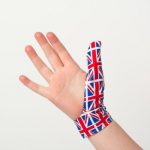
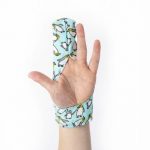



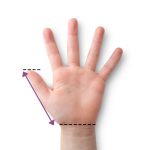
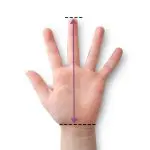













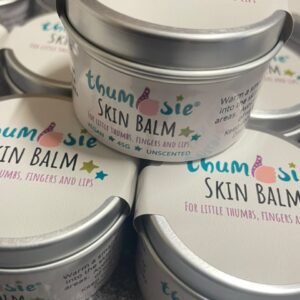


Connect with us